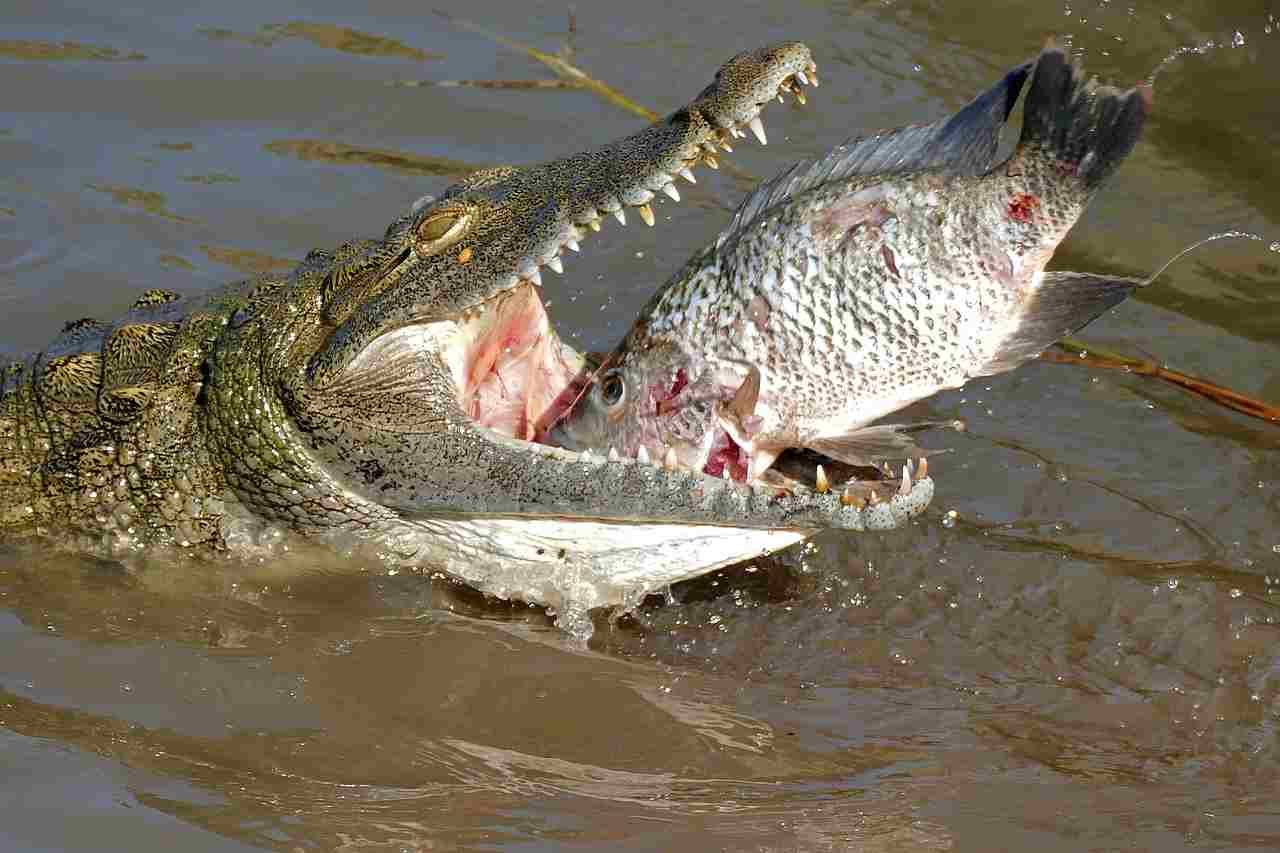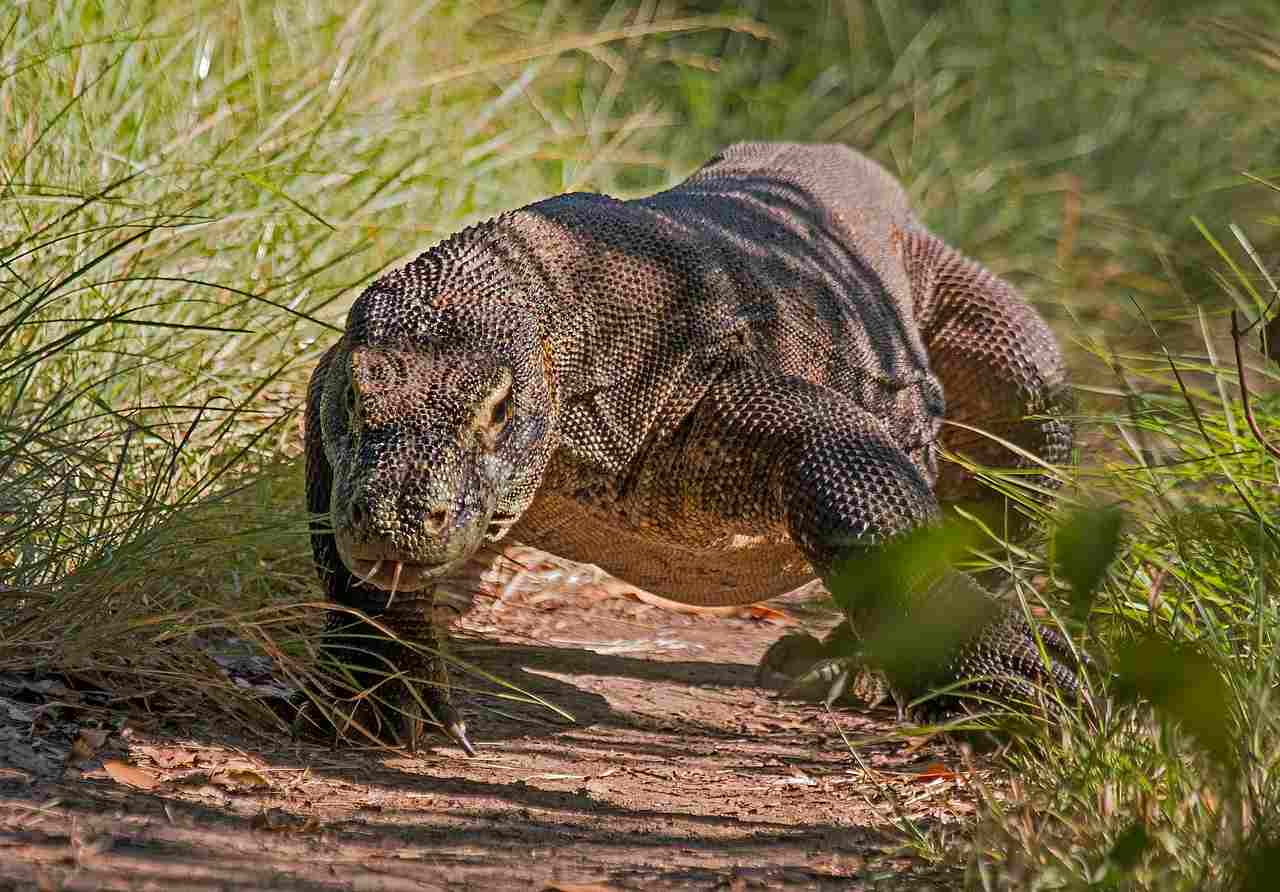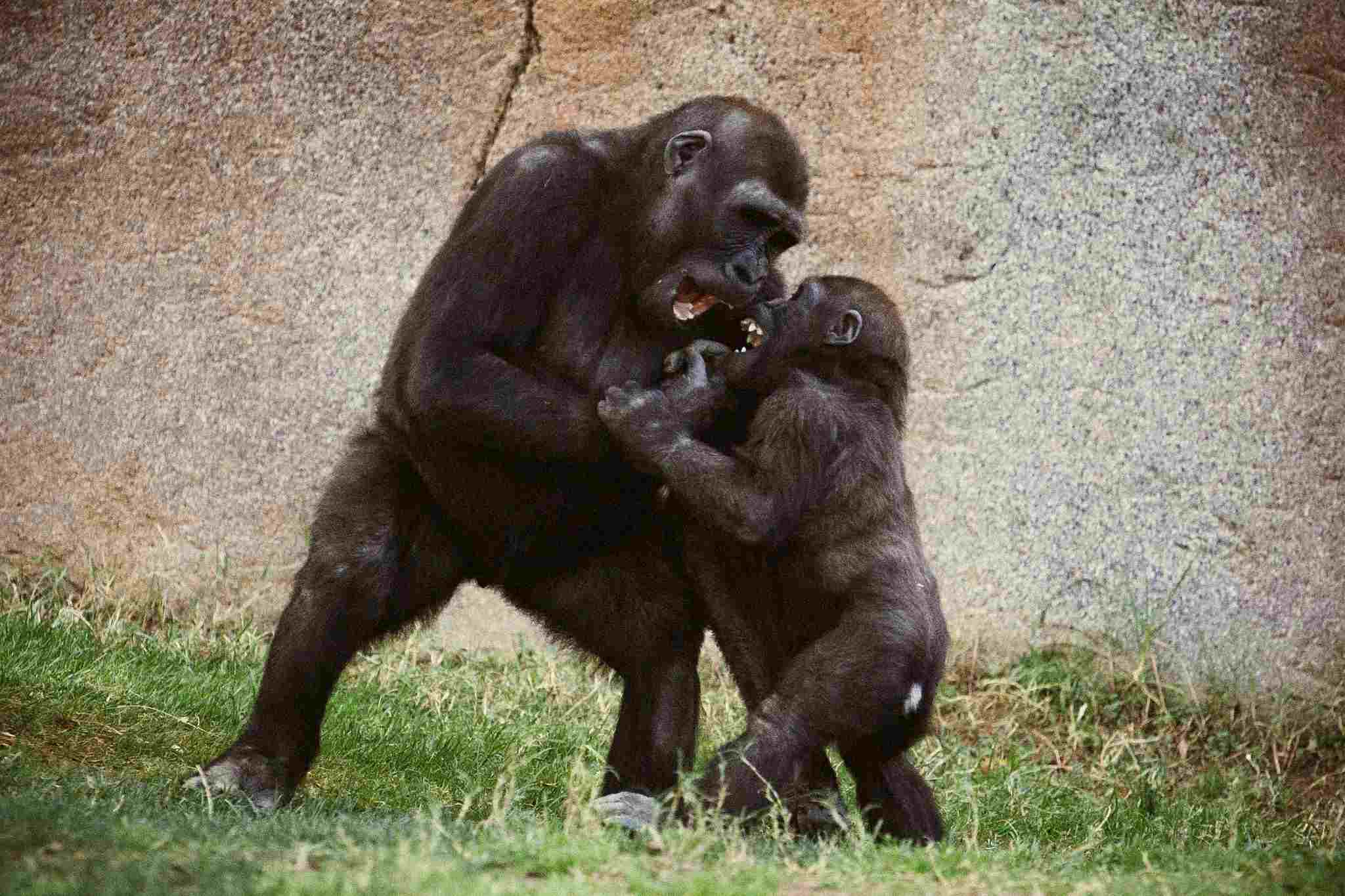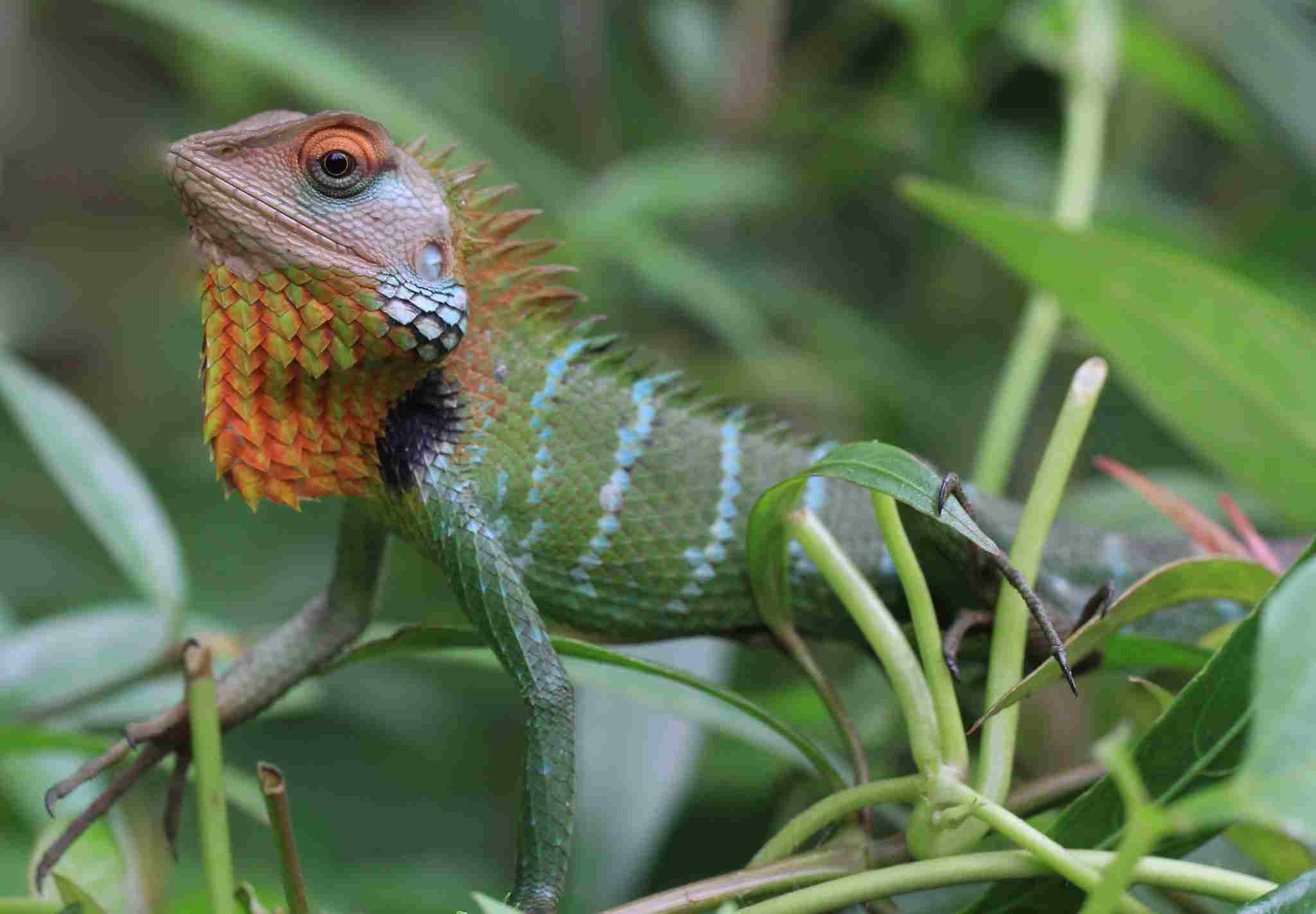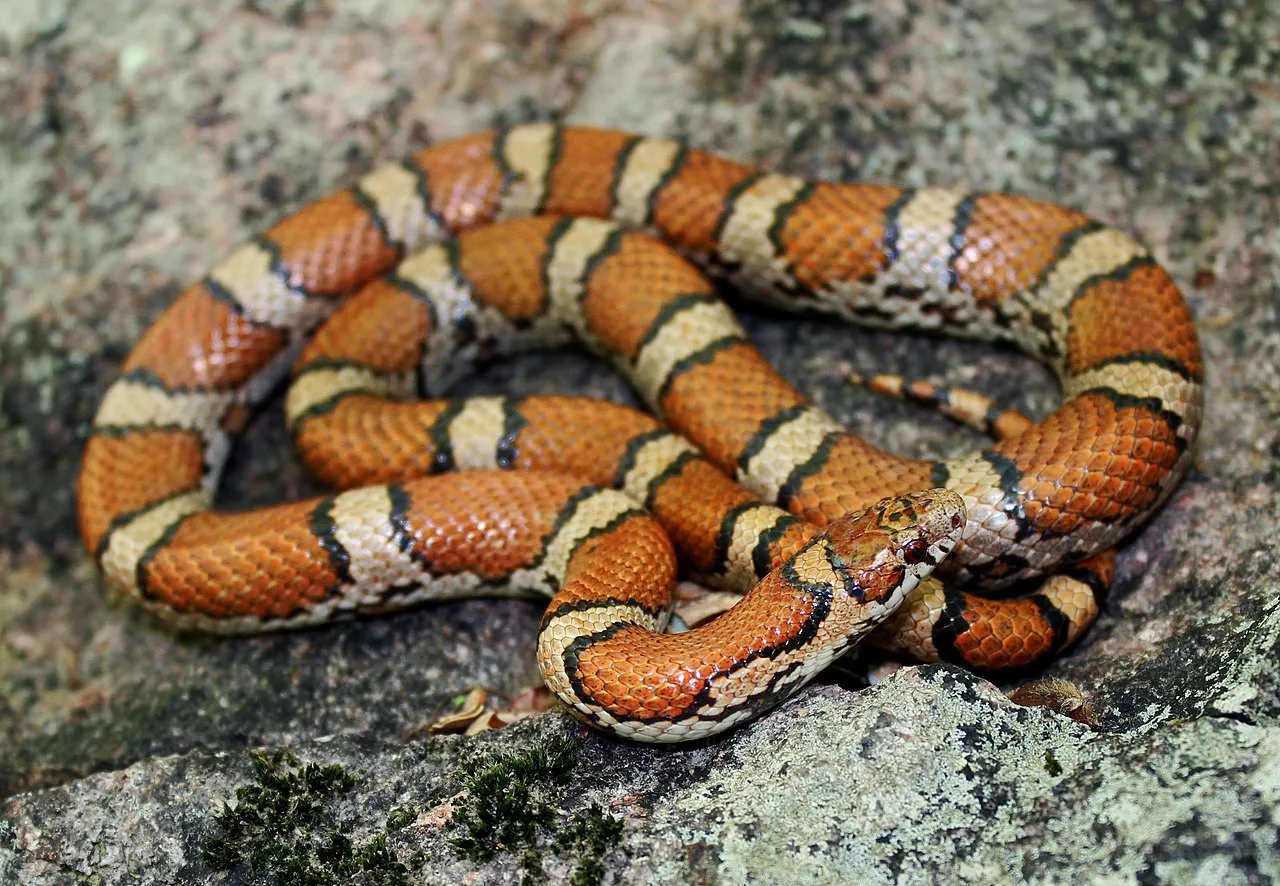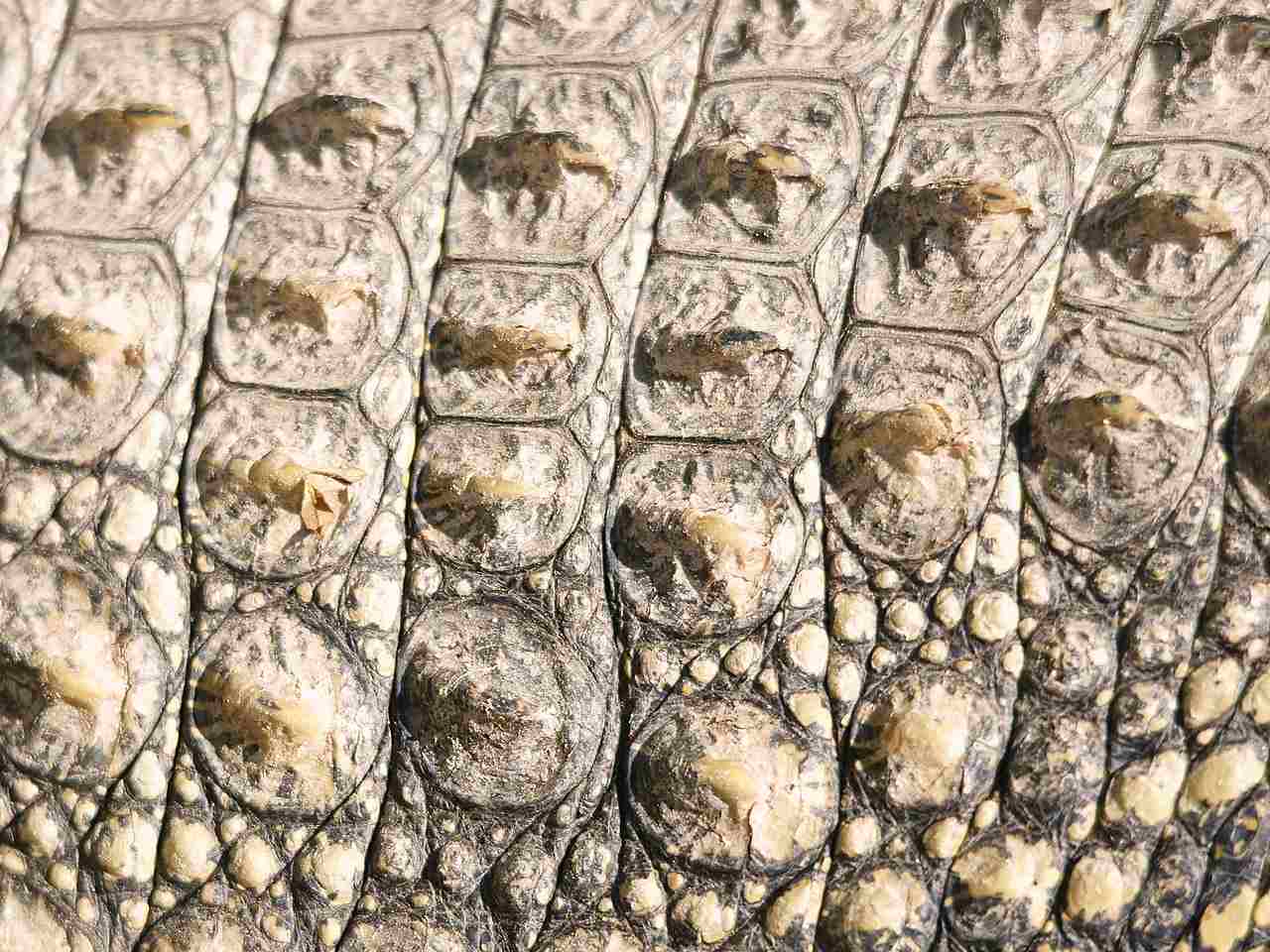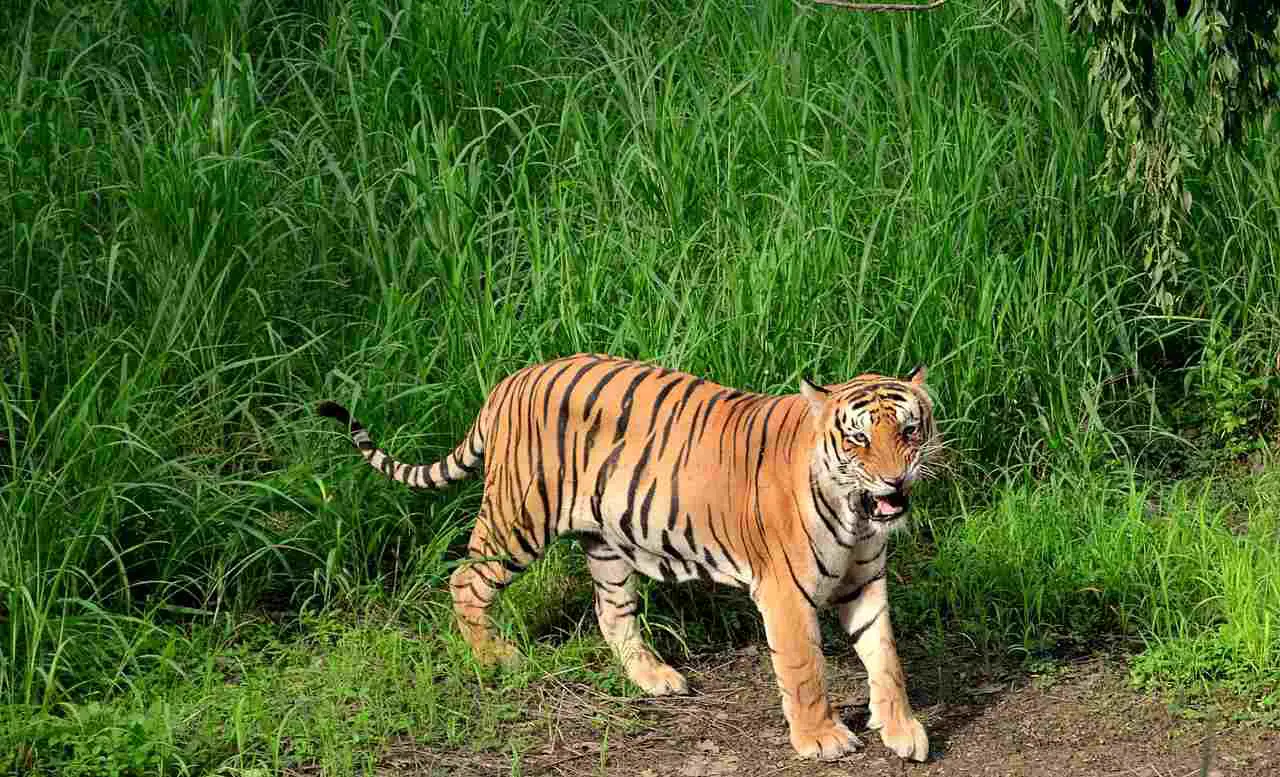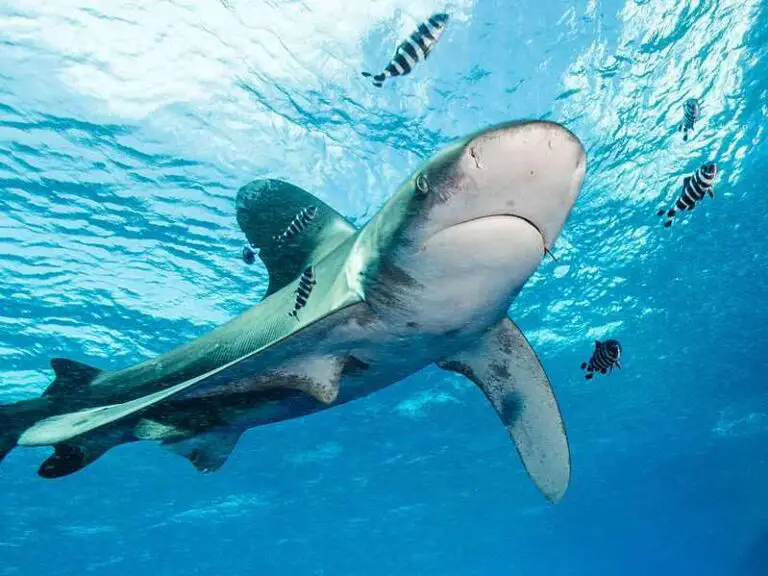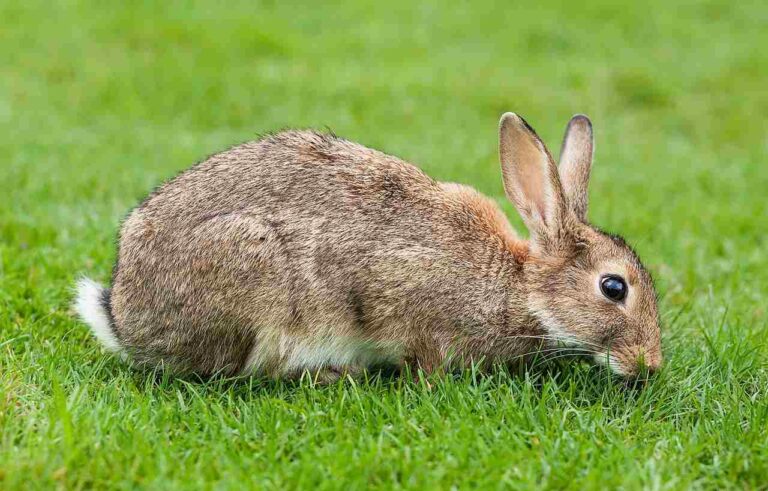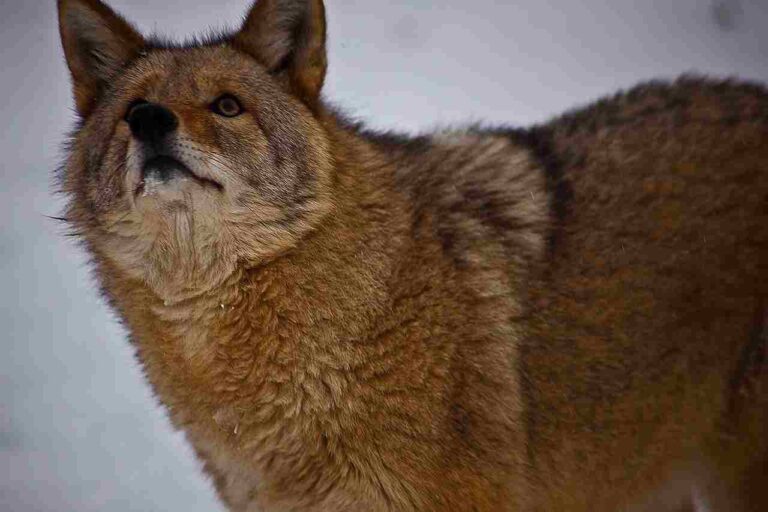23+ Dangerous Animals In Africa And Their Characteristics
Examples of dangerous animals in Africa are the African Elephant, which can be aggressive when threatened; the Hippopotamus, responsible for more human fatalities than other large mammals; and the Nile Crocodile, a stealthy predator with powerful jaws. These animals pose significant risks due to their size, strength, and aggressive behaviors, making it crucial to exercise caution and respect their territories. Other dangerous animals include the Black Mamba, a fast and highly venomous snake, and the African Buffalo, known for its unpredictability and aggressive charges. Encountering these animals in the wild requires utmost caution and respect for safety.
-
African Elephant
The African Elephant is the largest land animal on Earth, known for its sheer size and impressive intelligence. Despite their often docile appearance, these massive creatures can be extremely dangerous when provoked or threatened. With large tusks and powerful trunks, they can cause significant damage to vehicles, buildings, and people. Elephants are highly protective of their families, particularly their young, and will aggressively defend their territory against perceived threats. Encounters with aggressive elephants in the wild can be fatal, making it crucial for humans to maintain a safe distance and respect their space.
-
Hippopotamus

Hippopotamuses, commonly known as hippos, are among Africa’s most dangerous animals, responsible for more human fatalities in Africa than any other large mammal. Despite their stocky, docile appearance, hippos are aggressive and territorial, especially when protecting their territory along riverbanks or caring for their young. With their massive jaws and powerful teeth, they can inflict devastating injuries. Hippos are also surprisingly fast on land, making it difficult for humans to escape an attack. Caution is advised when near rivers or lakes where hippos reside, as they are known to charge boats or people who venture too close.
-
Nile Crocodile
The Nile Crocodile is Africa’s largest and most dangerous reptile, known for its formidable size, strength, and stealth. These apex predators can grow over 20 feet in length and have powerful jaws capable of crushing bones. They are ambush hunters, often lurking just below the water’s surface, waiting for prey to approach. Nile Crocodiles are notorious for attacking humans who venture too close to riverbanks, lakes, or marshes, making them a significant threat to those who rely on these waterways. With lightning-fast reflexes and a powerful death roll, Nile Crocodiles are among the deadliest predators in Africa.
-
Lion
The lion, often referred to as the “king of the jungle,” is a powerful predator and one of Africa’s iconic big cats. Known for their majestic manes and impressive size, lions are skilled hunters that work in prides to bring down large prey. Although generally not aggressive toward humans, lions can become a serious threat if they feel threatened, are defending their territory, or are hungry. Encounters with lions in the wild should be approached with extreme caution, as they are capable of reaching high speeds and possess sharp teeth and claws. Attacks on humans are rare but not unheard of, especially in areas where their natural prey is scarce.
-
African Buffalo
The African Buffalo, also known as the Cape Buffalo, is a large and formidable creature often associated with its unpredictable temperament. With massive curved horns and a muscular build, these animals are among the most dangerous in Africa, responsible for numerous attacks on humans. African Buffaloes are highly protective of their herds and will charge at perceived threats without warning. They are known to be particularly aggressive when injured or cornered, making them a significant risk for those on foot in the bush. Due to their sheer strength and ferocity, they are sometimes referred to as “the Black Death.”
-
Leopard
Leopards are elusive and stealthy big cats, known for their ability to adapt to a wide range of habitats across Africa. While they are typically shy and avoid human interaction, leopards can be dangerous, especially if they feel threatened or are searching for food. With powerful muscles, sharp claws, and impressive agility, leopards are capable of attacking prey much larger than themselves. Although human-leopard encounters are rare, they are not unheard of, particularly in areas where human settlements encroach on their natural habitat. Leopards are also known for their ability to climb trees, making them highly adaptable predators.
-
Black Rhinoceros
The Black Rhinoceros, or black rhino, is one of the most aggressive and endangered animals in Africa. Distinguished by its hooked upper lip, this rhinoceros has a reputation for being highly territorial and quick to charge at threats. Despite their massive size and thick skin, black rhinos can run at surprising speeds, making them difficult to evade when they attack. Encounters with black rhinos are extremely dangerous due to their unpredictable nature and powerful horns, which can inflict severe injuries. Conservation efforts are crucial to ensure the survival of this critically endangered species, but interactions with them must always be handled with caution.
-
White Rhinoceros
The White Rhinoceros, or white rhino, is another of Africa’s large and imposing creatures, known for its broad mouth and distinctive horn. Despite their gentle appearance and generally docile behavior, white rhinos can become extremely dangerous if provoked or threatened. They are massive in size and have the ability to charge at high speeds, using their horns to defend against perceived threats. While less aggressive than the black rhino, white rhinos are still capable of causing significant damage to vehicles or people who come too close. Conservation efforts are critical for this species, and interactions should always be approached with respect and caution.
-
Cape Cobra
The Cape Cobra is a highly venomous snake found in southern Africa, known for its vibrant yellow to brown coloration and distinctive hood. It is one of the most dangerous snakes in the region, with a potent neurotoxic venom that can cause respiratory failure and death if not treated promptly. Cape Cobras are typically found in arid regions, but they can also venture into human settlements, leading to potentially deadly encounters. Their aggressive behavior when threatened makes them a significant risk to humans, and bites require immediate medical attention. It’s crucial to exercise caution when hiking or working in areas where these snakes are known to inhabit.
-
Black Mamba
The Black Mamba is one of the most feared snakes in Africa, renowned for its speed, aggression, and highly toxic venom. Capable of reaching speeds of up to 12 miles per hour, it’s the fastest snake on the continent, and its venom can cause paralysis and death within hours if not treated promptly. Black Mambas are typically shy but will aggressively defend themselves if threatened, often striking multiple times in quick succession. Their large size and dark color, combined with their intimidating behavior, make them a significant danger in regions where they are found. Encounters with Black Mambas should always be approached with extreme caution and swift medical response in case of a bite.
-
Puff Adder
The Puff Adder is one of Africa’s most venomous snakes, known for its thick, stocky body and aggressive behavior when threatened. It is responsible for more snakebite-related deaths in Africa than any other species due to its widespread distribution and highly toxic venom. Puff Adders rely on their excellent camouflage to remain unseen, which often leads to accidental encounters with humans. When threatened, they will “puff” themselves up and emit a warning hiss, but they are quick to strike if the threat persists. Due to their slow movement and excellent camouflage, it’s important to exercise caution when walking in areas where Puff Adders are likely to be found.
-
Boomslang
The Boomslang is a highly venomous snake native to Africa, known for its striking green coloration and arboreal habitat. Although generally shy and reclusive, Boomslangs are capable of delivering a deadly bite if provoked or threatened. Their venom contains powerful hemotoxins that can cause severe internal bleeding and organ damage, leading to death if not treated promptly. The Boomslang’s slender body and excellent camouflage allow it to blend seamlessly into trees and shrubs, making it difficult to spot. While bites are rare, they require immediate medical attention due to the potency of the venom. Extreme caution is advised when working or walking in areas where Boomslangs are found.
-
African Wild Dog
The African Wild Dog, also known as the African Painted Dog, is a highly efficient predator known for its cooperative hunting strategies and distinctively patterned coat. Despite their playful appearance, these animals are formidable hunters and can be dangerous if encountered in the wild. African Wild Dogs hunt in packs and are capable of bringing down prey much larger than themselves through teamwork and endurance. While they generally avoid humans, they can become aggressive if their pack or territory is threatened. Encounters with these dogs should be approached with caution, as their social structure and hunting skills make them a significant risk in the wild.
-
Spotted Hyena
The Spotted Hyena, often called the laughing hyena, is one of Africa’s most adaptable and resilient predators. Known for their eerie vocalizations and powerful jaws, spotted hyenas are capable of crushing bone and have a diet that includes both hunting and scavenging. Despite their reputation for scavenging, they are skilled hunters capable of taking down large prey, often using teamwork and endurance to wear down their targets. While generally not aggressive toward humans, spotted hyenas can become dangerous if they feel threatened or if their territory is encroached upon. Encounters with these creatures should be approached with caution, as they have a complex social structure and can be unpredictable.
-
Great White Shark
The Great White Shark is one of the ocean’s most formidable predators, known for its size, power, and aggressive hunting behavior. Found in the coastal waters of southern Africa, particularly around Seal Island and the coast of South Africa, these sharks are capable of reaching lengths of over 20 feet and have powerful jaws filled with razor-sharp teeth. Although attacks on humans are relatively rare, the Great White Shark’s size and power make it a significant threat to surfers, divers, and swimmers in regions where they are found. Encounters with these sharks should be approached with extreme caution, and safety guidelines should always be followed in shark-prone waters.
-
African Rock Python
The African Rock Python is the largest snake in Africa, known for its massive size and incredible strength. Capable of reaching lengths of over 20 feet, these pythons are formidable constrictors that can subdue and consume large prey, including antelopes and occasionally even humans. Although attacks on humans are rare, they can occur, especially when the python feels threatened or is searching for food. African Rock Pythons are often found near water sources and in densely vegetated areas, making them a potential threat to those working or walking in such regions. Extreme caution is advised when encountering these giant snakes, as their strength and size make them capable of causing severe injuries.
-
Cheetah
The Cheetah is renowned for being the fastest land animal, capable of reaching speeds up to 60 miles per hour in short bursts. Unlike other big cats, cheetahs rely on their speed and agility to hunt, preferring open plains where they can sprint after prey. While generally shy and less aggressive toward humans than other big cats, cheetahs can still pose a danger if threatened or cornered. Encounters with cheetahs in the wild are rare, but they can happen, particularly in regions where their natural habitats intersect with human settlements. It’s best to give them space and avoid sudden movements to prevent triggering a defensive response.
-
Serval
The Serval is a medium-sized wild cat native to Africa, known for its long legs and large ears. Although generally less dangerous than other big cats, servals are still wild animals and can become aggressive if threatened. They are excellent jumpers and skilled hunters, primarily preying on small mammals and birds. Servals are not typically aggressive toward humans but may pose a risk if approached too closely or if they feel cornered. As with all wild animals, it’s crucial to respect their space and avoid unnecessary interactions to minimize the risk of conflict.
-
Vervet Monkey
The Vervet Monkey is a small primate found across Africa, known for its curiosity and social behavior. While generally not dangerous, vervet monkeys can become aggressive when defending their territory or if they are accustomed to humans providing food. They have been known to steal food and other items from campsites or lodges, and they can become aggressive if confronted. Although their bites are not as severe as those from larger animals, they can still cause injury and infection. It’s best to keep a safe distance from vervet monkeys and avoid feeding or encouraging their presence around human settlements.
-
Green Mamba
The Green Mamba is a highly venomous snake found in Africa, known for its vibrant green coloration and arboreal lifestyle. Although less aggressive than the black mamba, green mambas can be extremely dangerous due to their potent neurotoxic venom. They are typically shy and prefer to avoid humans, but will defend themselves aggressively if threatened or cornered. Green mambas are often found in trees and dense vegetation, where they can be difficult to spot. Encounters with these snakes require caution and immediate medical attention in case of a bite, as their venom can cause severe neurological damage and death if not treated quickly.
-
Mosquito
Mosquitoes are small flying insects that are responsible for more human deaths worldwide than any other creature, primarily due to their role in spreading diseases like malaria and dengue fever. In Africa, the Anopheles mosquito is the primary vector for malaria, posing a significant threat to human health. Mosquito bites are typically not painful, but the diseases they carry can be deadly, leading to severe illness and death if not properly treated. Preventative measures such as insect repellent, bed nets, and anti-malarial medications are crucial in regions where mosquitoes are prevalent. Mosquitoes are most active at dawn and dusk, and caution is advised during these times to reduce the risk of bites.
-
Tsetse Fly
The Tsetse Fly is a large biting fly found in sub-Saharan Africa, known for its role in transmitting African trypanosomiasis, also known as sleeping sickness. This disease can be fatal if not treated, and the tsetse fly is the primary vector, biting humans and animals to spread the disease. Tsetse flies are often found in wooded and forested areas, and their bites are painful, causing swelling and irritation. Preventative measures, such as wearing protective clothing and using insect repellent, are essential to avoid tsetse fly bites in regions where they are common. Immediate medical attention is necessary if bitten and exhibiting symptoms of sleeping sickness.
-
Cape Fur Seal
The Cape Fur Seal is a marine mammal found along the southern coast of Africa, known for its playful behavior and large colonies. While they are generally not dangerous to humans, Cape Fur Seals can become aggressive if they feel threatened or if their territory is encroached upon. They have powerful jaws and sharp teeth, capable of inflicting severe bites. Interactions with Cape Fur Seals should be approached with caution, especially during the breeding season when males can be particularly aggressive. It’s best to maintain a safe distance from seal colonies and avoid approaching them to prevent potential conflicts.
-
Baboon
Baboons are large primates found across Africa, known for their intelligence and complex social structures. Although they are often seen in groups and can appear playful, baboons can be highly aggressive when defending their territory or seeking food. They have large canine teeth and powerful jaws, capable of inflicting severe bites. Baboons are known to raid human settlements in search of food and can become aggressive if confronted. It’s important to keep a safe distance from baboons and avoid feeding or encouraging their presence near human dwellings to reduce the risk of aggressive encounters.
| Animal |
Key Characteristics
|
| African Elephant |
Massive size, powerful trunk, can be aggressive when threatened or defending young
|
| Hippopotamus |
Aggressive, territorial, fast on land, known to attack boats and humans
|
| Nile Crocodile |
Large, stealthy predator with powerful jaws, attacks near water sources
|
| Lion |
Powerful predator, hunts in prides, aggressive when threatened or hungry
|
| African Buffalo |
Unpredictable, aggressive, large horns, known to charge threats without warning
|
| Leopard |
Stealthy big cat, capable of climbing trees, can be aggressive when threatened
|
| Black Rhinoceros |
Highly territorial, quick to charge, massive size and powerful horns
|
| White Rhinoceros |
Massive size, less aggressive than black rhino, still capable of causing severe damage
|
| Cape Cobra |
Highly venomous, aggressive when threatened, found in southern Africa
|
| Black Mamba |
Extremely venomous, aggressive and fast, can be deadly without prompt treatment
|
| Puff Adder |
Highly venomous, responsible for more snakebite-related deaths in Africa
|
| Boomslang |
Arboreal and venomous, deadly hemotoxins, requires immediate medical attention if bitten
|
| African Wild Dog |
Efficient predator, hunts in packs, can be aggressive when threatened
|
| Spotted Hyena |
Powerful jaws, capable of crushing bone, skilled hunters and scavengers
|
| Great White Shark |
Formidable predator, known for its size and power, a threat to swimmers and divers
|
| African Rock Python |
Largest snake in Africa, formidable constrictor, capable of consuming large prey
|

